Artist Rosso on her practice and her go to materials
Posted by Cass Art on 25th Feb 2021
Rosso Emerald Crimson is an Italian artist, based in London, blurs the line between realist and surrealist., Before she was focusing solely on her paintings, she graduated in Human Rights and International Relations and briefly worked in Marketing. Primarily self-taught, she trained for at the Prince Drawing School and at LARA (London Atelier of Representational Art) in London. We spoke to Rosso about her development of her practice, her go materials and experience of winning the 2017 Holly Bush Emerging Women's Painter Prize. Enjoy!
Hi Rosso, thanks for taking the time to speak to us today. Could you tell us a bit about your journey as an artist?
Hi! Thank you for the chance to speak about my art, especially in these times of forced isolation! My 'initiation’ as an artist started around 9 years ago. A friend of mine was modelling in a life drawing class and invited me to accompany him and have a go at drawing. Wow. It was love at first sight! Since then, I started attending more life classes, community art workshops, painting courses, and so on, until eventually from an occasional evening hobby it has become my main activity.
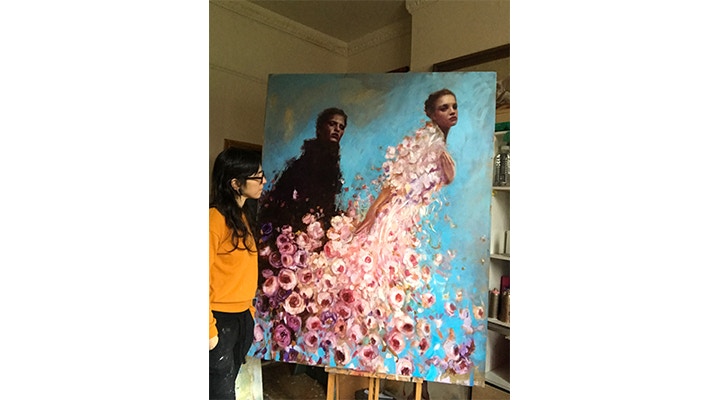
In your work you have such a unique aesthetic could you talk about the themes you explore and why?
I am mostly driven by painting the human figure. I am tremendously fascinated by how a tweak of the brush can translate into a whole range of different human emotions. And equally, how the play of colour-texture-paint charge a painted subject with a psychological dimension that makes them look almost independent, alive. I am very happy when the characters I paint assume their own personality. At the same time, I know that even if they look very different to me, every one of them embody an aspect or an emotion that is very dear to me. They are all self-portraits in disguise, playing under the big umbrella of ‘femininity’.
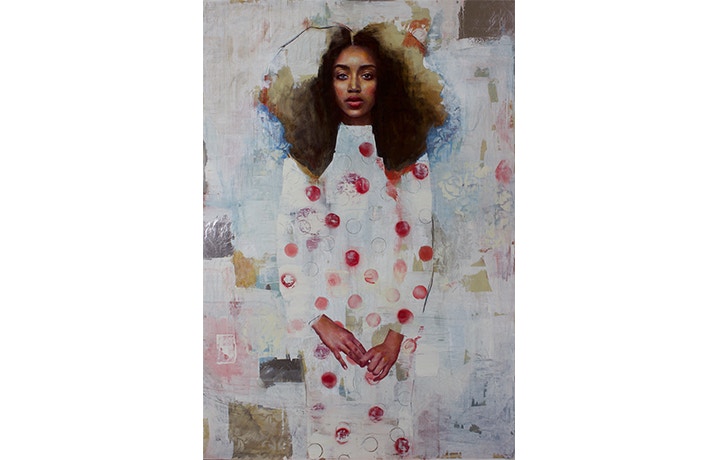
The subject depicted in your paintings have such an imposing powerful presence. How do you go about portraying this? Also, how do you choose the sitters your paint?
The models I choose to portray must resonate strongly with me. It is only then that I can spend hours and hours working on the canvas until they start existing on their own. I am not interested in depicting a particular aesthetic or look; I am not even interested in being too clear about a message. I prefer intuition, to logics. My main drive is in creating psychologically charged characters that connect with the audience, directly or in subconscious ways.
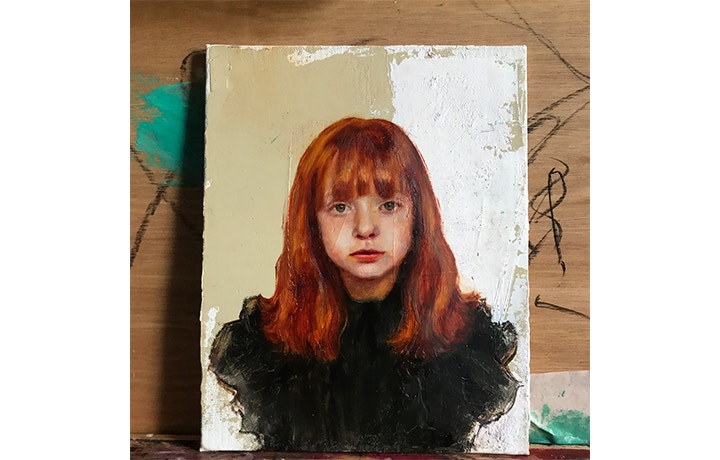
In your work you have such a vibrant rich colour palette. Can you talk about the spectrum of colour you use in your work?
Yes you are right, what emerges at a first glance is the vibrancy of colours. After years of practice though, I realised a pattern. My palette is strongly seasonal. I tend to use a lot of highly saturated colours from Spring until late Autumn. Last summer, for instance, it was the summer of the Phthalo blue. I used it so much I myself got saturated with it! From November on, without me realising it, the dimming light and the grey sky muted my palette down. The background turned greysh-ivory, and the subject themselves melt with the background. The characters are less loud, as if they entered a peaceful state of rest, while waiting for the new spring to come. Since I became aware of this pattern, I am more open about the choice of the palette for a particular painting, leaving deliberately to the moment.
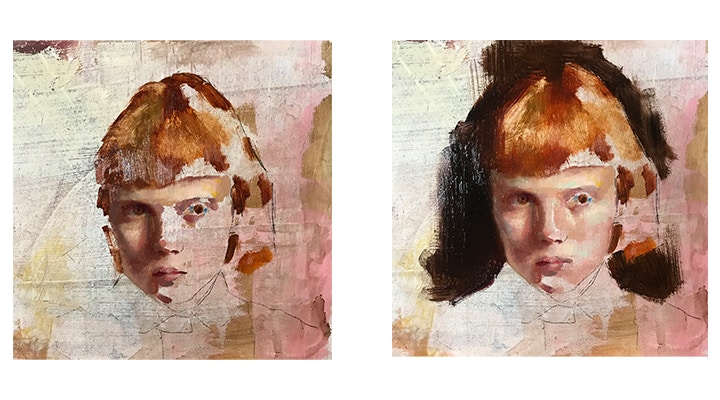
Can you talk about the materials you use in your work and why this are important to your practice?
I use oil painting, both artist and student grade. I tend to cover large areas of the painting with good quality student grade (for instance, Georgian oil painting) and then move on to finer artists grade oil paint for the details. I use mostly Winsor & Newton and Cass Art own brand. For diluting the paint in the first sketchy phases, I use Zest it solvent. For the second stage or final layers, I have been using a variety of mediums, depending on the effects I wanted to achieve, such as standoil, cold pressed linseed oil, refined linseed oil and liquin. I am forcing myself to avoid highly toxic medium and rather choose more natural compounds.
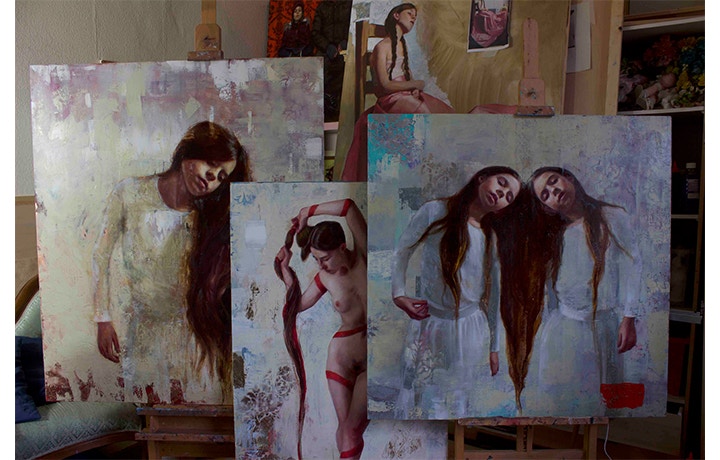
What was the experience like of winning the Holly Bush Emerging Woman’s Painter Prize?
That was a great experience, and I am very proud of it. I made a lot of valuable connections and it opened new venues for me. It was the very first edition when I won, and since then the price is growing stronger and wider year after year. It really is a great support for emerging female artists.
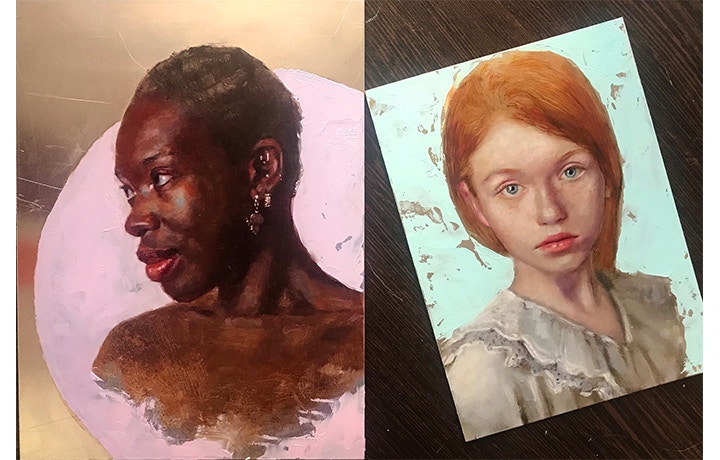
The last few months have been so strange for us all on many levels and we’ve spoken to a lot of artists about the impact it has had on their practice. From a creative perspective how have you found the last year in lockdown?
I have personally not stopped producing work. At the beginning of the lockdown, I did not realise much the change in my routine, we are always isolated in our studios afterall... It’s only when the holiday season arrived, especially last Christmas, that I realised the severity of the situation and the psychological impact of this ‘overworking’. These days, I am trying to follow a new healthier routine, with more walks in the park, yoga and meditation, more calls to friends and family, and above all, days off. Keeping the balance is the key, despite the oddity of the situation around us.
Finally do you have any advice for anyone starting out their artistic careers?
A three-fold advice in this sequence: learn the rules, break the rules, learn how to break the rules.
FEELING INSPIRED?
Shop online for everything you'll need. Don't forget to hashtag #cassart on social media to show us your creations


